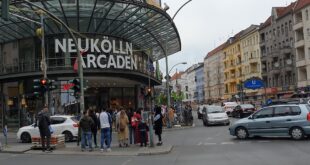
Africa’s internet economy is booming. According to a report by the World Bank, Africa will add $180 billion to its economy by 2025, thanks to the recent growth of its eCommerce activities. One good example has been the current aggressive expansion of MallforAfrica, which will now be available to consumers in Senegal, Sierra Leone, and nine other new markets. Other developments, like the introduction of high speed 4G network by Tizeti, have also spurred on the switch to online shopping. As demand for online shopping grows in the continent, more entrepreneurs are taking a chance in the eCommerce world. With competition heating up, some brands are finding ways to set their brands apart, while other opportunities continue to go unexplored.
The Need For The Right Platform Is Becoming Rapidly Apparent
A shocking amount of African businesses do not have an online presence. In South Africa, only 28 percent of businesses have a website, and 42 percent rely solely on social media platforms to get their brand out there. Yet at least 21 million Africans shopping online every year – an 18 percent year on year surge since 2014. The failure of businesses to capitalize on establishing a good first impression with a well designed eCommerce website highlights a glaring need in the African eCommerce industry – the need for businesses to embrace software development and digital infrastructure more in bringing their services to consumers.
Consumers Want Brands That Champion Good Causes Close To Their Hearts
Consumer trust is declining. More consumers are becoming vocal about what they want to see in the brands they shop with. Multiple studies have highlighted one repeated observation – the need for more personable brands. In a Global Corporate Sustainability report, 68 percent of South African consumers said they are willing to pay more for brands that champion positive environmental and social impacts in society. Similarly, many consumers are calling on online businesses to encourage diversity in their workplace, and encourage their competitors to do the same. For instance, the need to include more diverse ethnic and gender models when selecting stock images for their website is becoming increasingly clear.
A Clear Brand Identity And Social Media Presence Remains Key To Connecting With Online Customers
A report by CNN showed that while 63 percent of the African population has access to piped water, a stunning 93 percent have mobile phones. While print media is still prevalent in Africa, there is a clear opportunity to capture the attention of African shoppers digitally – particularly on social media. Social networking websites like Twitter and YouTube are among the most visited websites on the continent.
Social media platforms were also a heavy feature in digital marketing trends for African brands in 2019 and 2020. There is a five times higher conversion rate on video content posted on any social media platform. Visual branding and and consistency is also important to brand building. A study of 50 of South Africa’s major brands showed that while Facebook is the best social media platform for a mass market reach, Instagram has a higher engagement rate. This is something that will prove valuable to new and expanding eCommerce brands who are focusing on customer acquisition.
While there remain some formidable challenges to the growth of eCommerce in Africa, such as the lack of adequate logistical infrastructure, there is no denying that the recent surge of activity has created a much need boost to the economy and opportunities for African entrepreneurs. As interest in eCommerce grows, the focus for new entrepreneurs will now be on building a strong and identifiable online brand in a rapidly growing market.
Sara O’Hare
 THE AFRICAN COURIER. Reporting Africa and its Diaspora! The African Courier is an international magazine published in Germany to report on Africa and the Diaspora African experience. The first issue of the bimonthly magazine appeared on the newsstands on 15 February 1998. The African Courier is a communication forum for European-African political, economic and cultural exchanges, and a voice for Africa in Europe.
THE AFRICAN COURIER. Reporting Africa and its Diaspora! The African Courier is an international magazine published in Germany to report on Africa and the Diaspora African experience. The first issue of the bimonthly magazine appeared on the newsstands on 15 February 1998. The African Courier is a communication forum for European-African political, economic and cultural exchanges, and a voice for Africa in Europe.

































